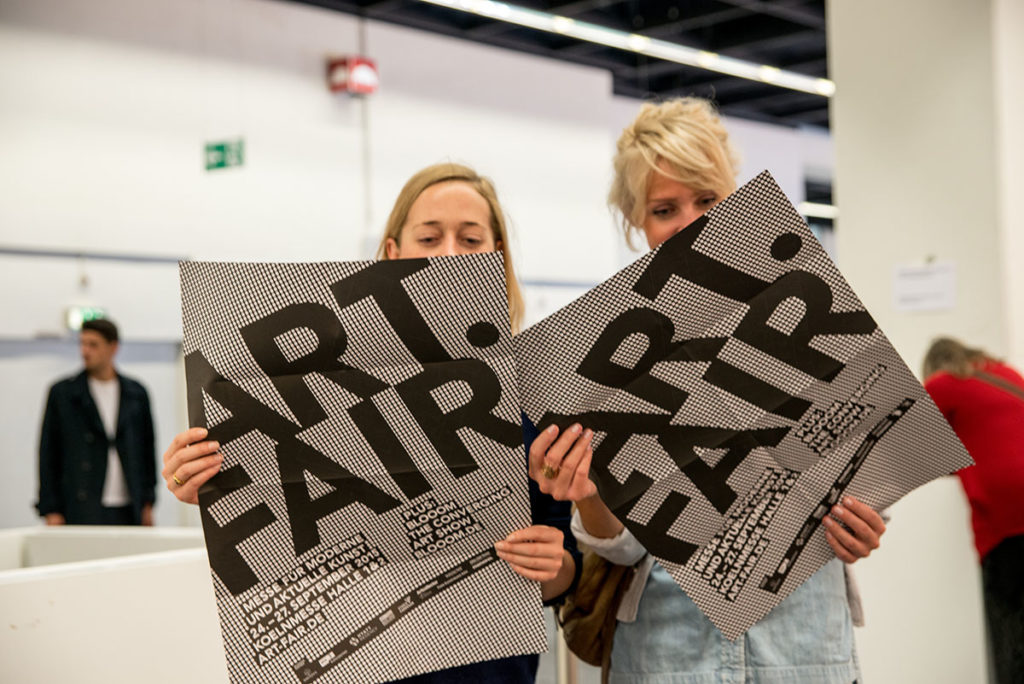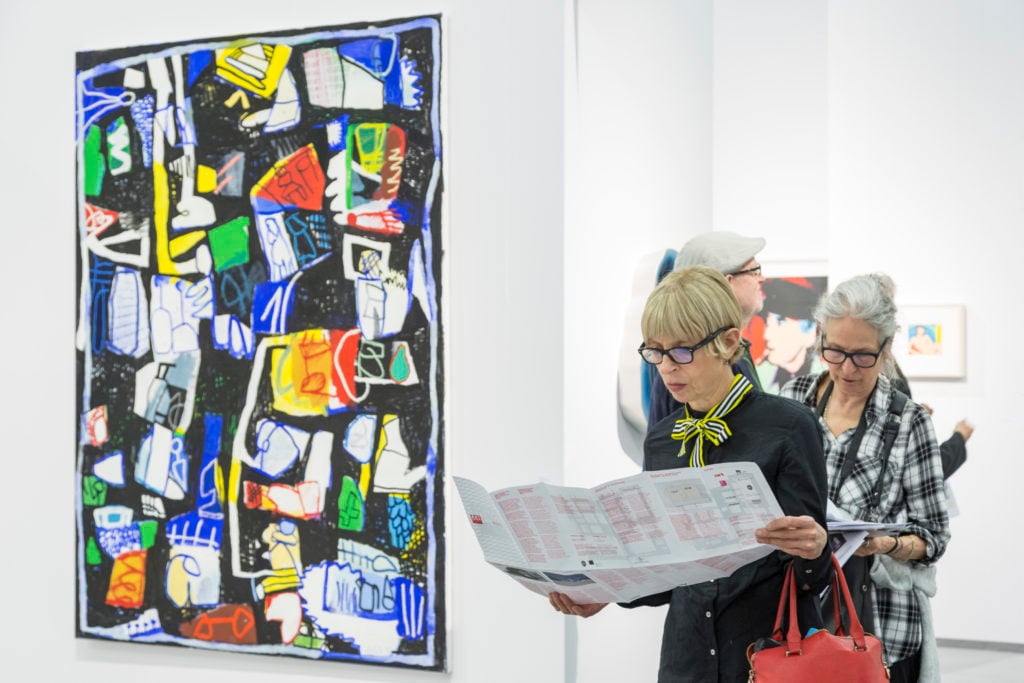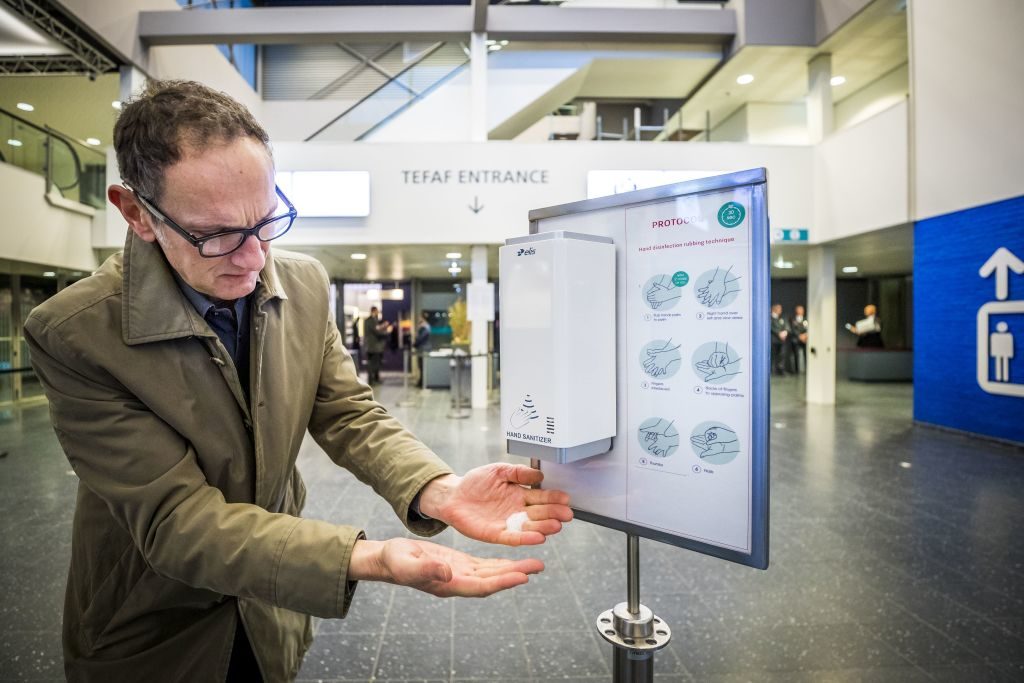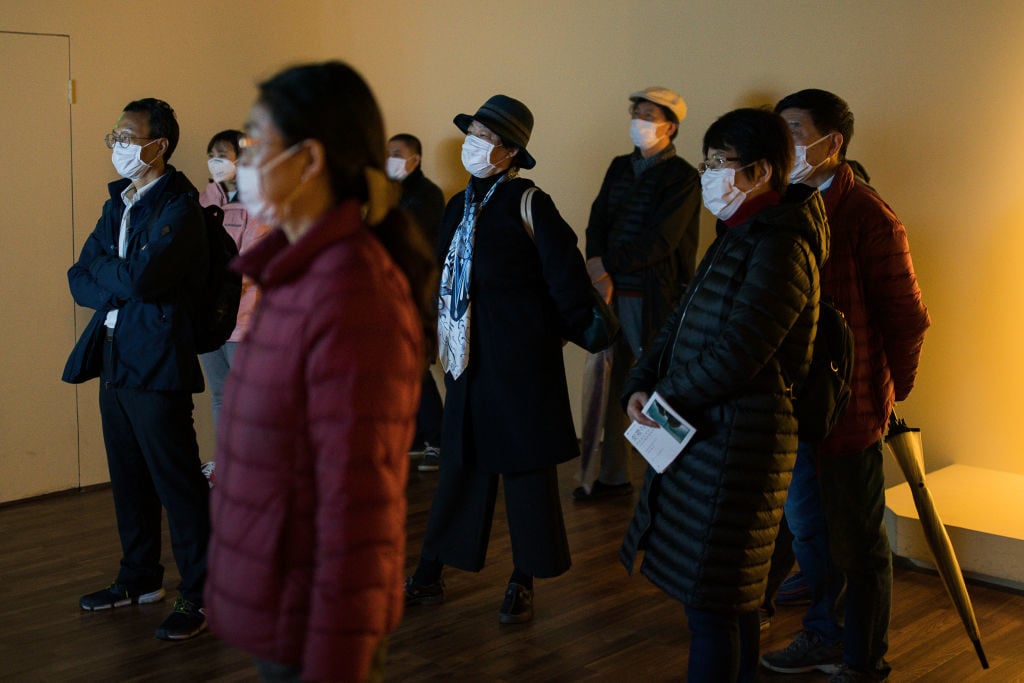‘What Does a Gallery Become?’: Small Galleries Seek Solutions as They Face a Perilous Spring Without Fairs or Exhibitions
Small and mid-range galleries are the most vulnerable to economic shifts, but they are also more spry.

Vernissage in Cologne. Image courtesy of Art Fair Cologne, 2015.
For decades, the contemporary art market has essentially functioned as a bountiful flow of physical meetings: crowded openings, boozy dinners, and chatty fair floors, not to mention handshake deals. So what happens when all that evaporates? We’re about to find out.
As galleries close their doors to do their part to prevent the spread of COVID-19, and collectors (not to mention employees, artists, and every other cog in the art-world machine) are advised to stay home for an indeterminate amount of time, the market is preparing for a prolonged period of pain. One pressing question is exactly how smaller galleries—who lack the cash reserves of larger art businesses and who rely heavily on income generated at now-cancelled or postponed art fairs—will fare in this new world.
“Within the art ecosystem, it seems like everyone will suffer in varying capacities,” said Taymour Grahne, an art advisor who ran a New York City gallery from 2013 to 2017. “Galleries still have running costs, including rent, and will need ways to sell in order to cover their basic costs, even if their spaces are closed.”
While more collectors are comfortable buying online or via PDF than ever, Grahne cautions that it will still be difficult “to make up for the sales they would have made had the galleries been open or at a fair.” And indeed, initial sales reports from Art Basel Hong Kong’s online viewing room, which opened Wednesday, favored the mega-galleries over the smaller dealers, with reported sales in the six- and seven-figure range from David Zwirner and Gagosian.

NOTHELFER’s booth at Art Cologne 2019.
Already, one collector notes, buyers are asking for discounts and prices are being adjusted downward across the board. “Whatever happens to the virus, the activity in the art market will not return before years to the level of six months ago,” said the Belgian collector Alain Servais, “and the prices of a month ago are not the prices of today. It will take time as usual for the art market to adjust to this gap between hoped-for selling prices and what people are ready to pay.”
The Question of Cash Flow
There are early signs that governments might step in to help ease the burden. Last week, Germany’s culture minister vowed to help the arts and cultural sectors with grants and liquidity assistance. The scope of the package, and just how much will be made available to galleries in particular, remains to be seen. Berlin’s senate is launching an application today for “bridging loans,” for which small businesses, including cultural businesses, can apply.
And New York City has launched the Employee Retention Grant Program to help retain employees as businesses face decreased revenue—and galleries are hoping to qualify. The program is available to city businesses with one to four employees that can demonstrate at least a 25 percent drop in revenue as a result of COVID-19. Eligible businesses can receive a grant covering up to 40 percent of their payroll for two months, up to $27,000. The department did not immediately respond to Artnet News’s questions about whether art galleries are eligible.
“If people decide that they’re willing to take on more financial burden, and that debt, those are going to provide legitimate solutions for the short term,” New York dealer Robert Dimin said of grants and no-interest loans.

A visitor uses disinfecting hand gel at the main entrance to TEFAF Maastricht. Photo: Marcel Van Hoorn/ANP/AFP/Netherlands OUT via Getty Images.
Elsewhere, members of trade organizations like the New Art Dealers Alliance have been having conversations via web chat to brainstorm solutions. “Yesterday, about 25 of us were talking about ways to collectively approach people—maybe in the chamber of commerce—to ask for help,” Dimin said.
But measuring and providing exact figures about revenue declines—an important factor in qualifying for certain support programs—may prove challenging for galleries. “Because our industry functions differently than, let’s say, a restaurant, it’s a matter of, how do we show our losses?” Dimin noted. “That is probably not going to be something that we’re going to be able to show until the middle of April or the end of April. We’re not necessarily going to be able to ask for financial support today. It may be something we have to have to ask for in a month.”

Visitors wearing protective masks watch a video clip in Shanghai Museum on March 13, 2020 in Shanghai, China. Photo: Yifan Ding/Getty Images.
The Costs of a Calendar Shake-Up
Though the warning signs had been on the horizon for a while, by mid-March, a wave of fairs around the world were officially called off. Events including Miart, Art Cologne, SP-Arte, Art Dubai, and, most recently, Frieze New York were postponed or cancelled, and TEFAF Maastricht closed early after it came to light that an exhibitor had contracted coronavirus.
But smaller galleries seem to be, at least for the moment, less concerned about the cancellation of fairs than getting stuck attending those that perform badly. “I prefer the cancellation of a fair instead of making all the efforts and investments and in the end experience a really bad fair,” said Nir Altman, the dealer behind a young eponymous gallery in Munich. He was set to attend his second edition of Art Cologne, a major financial hub for galleries in Germany, but, like many others Artnet News spoke to, he supports the decision to cancel or postpone fairs for health concerns.
The stakes have always been higher for small- to mid-sized galleries, who tend to represent emerging artists with lower price points, and therefore need to sell a lot more work at fairs to break even. And according to the Art Basel and UBS market report, dealers made 45 percent of their annual sales at art fairs last year.
“It is not so much an art fair that did not happen than an art fair that did happen and was not a success, like the Armory Show,” says André Schlechtriem of Berlin-based Dittrich & Schlechtriem Gallery, who attended the fair less than a week before New York began to limit large public gatherings. “It was hard to have the few collectors that came to the fair to focus on the works, and almost no curators came; journalists also only wanted to talk about coronavirus.”
Grahne told Artnet News that he placed four works for three different clients last week and has encouraged them to keep acquiring work if they are able to do so. But with the situation escalating and shifting so rapidly—even from one hour to the next—that focus may be hard to maintain.
“I’m not pushing sales this week. I’m not sending out PDFs,” Dimin told Artnet News. “I need to be sensitive to everybody’s fears and concerns. Although I want to be concerned about the bottom line of my business, we need to give it a moment of time and let people breathe.”
. . .
